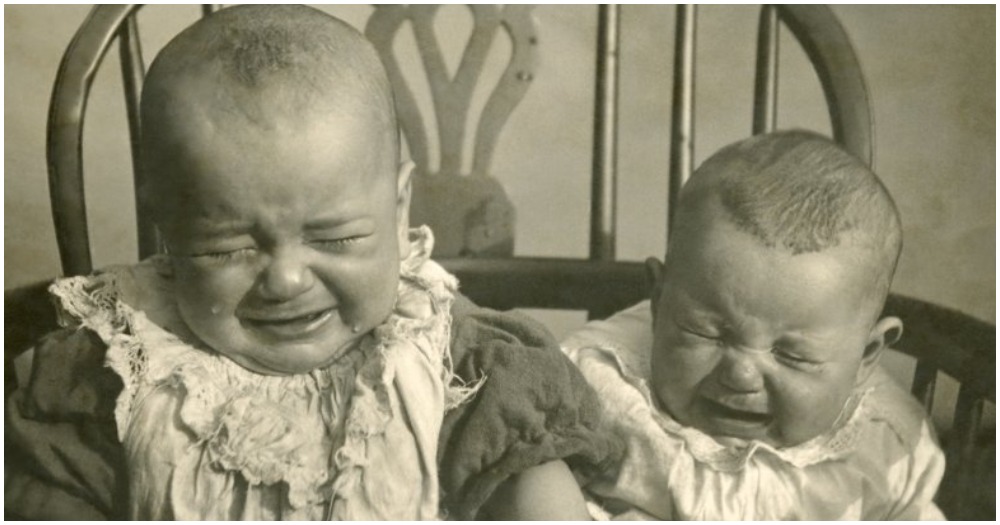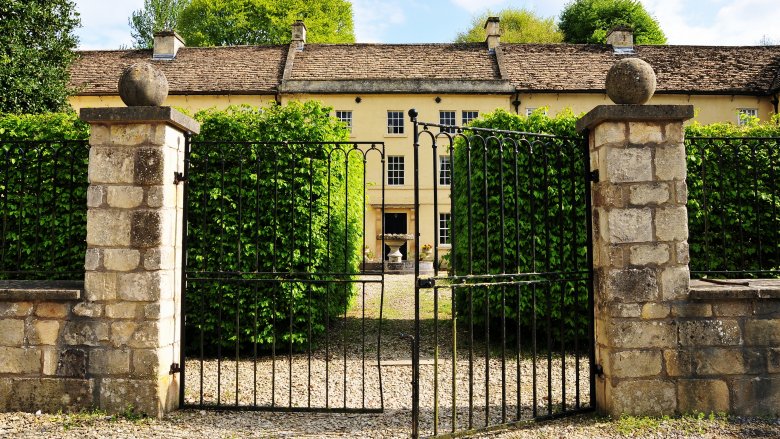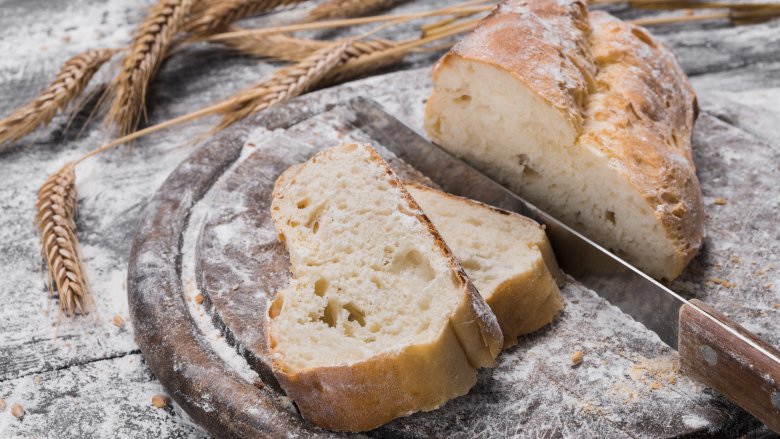
5. Divorce wasn’t a thing, so men sold unwanted wives

Divorce wasn’t allowed in England until the Matrimonial Causes Act of 1857, but people have been having marital difficulties for as long as they’ve been getting married. Since you couldn’t just sign some papers and be on your merry way, people needed to find another way out. As a result, wife-selling became a completely legitimate way to get out of a marriage, and it continued well through the 19th century, particularly in rural Britain.
According to research done by Lauren Padgett from Leeds Trinity University, wife sales could happen in public or in private. But the public sales were quite the spectacle. The husband typically puts some kind of lead rope on his unwanted wife, took her to a public square, and asked for offers. Sort of like eBay, but with your wife instead of an old smartphone.
Records suggest that the wife had veto power over the sale, and sometimes it was for cash, and sometimes the price included goods. Prices varied: one wife was sold in Selby in 1862 for a pint of beer, while others seem to have gone for a decent amount of cash.
And according to economist Peter Leeson (via Motherboard), it wasn’t necessarily a bad deal for the wives. Not only did it give them a way out of a bad situation, but they could also trade up into a marriage where they were valued—one that could possibly be with a rich older man who wasn’t a part of the traditional marriage pool. So…yay wife-selling? Kind of?
6. The Abode of Love was a crazy sex cult

The Victorians have a bit of a reputation as being at least slightly repressed, so you can only imagine what most people must have thought when a crazy sex cult popped up in 1846. It was founded by Henry Prince, a one-time clergyman who started recruiting followers—mostly rich, unmarried women—by convincing them to “donate” all their cash to him so that he could build what he called “The Abode of Love.” According to The Telegraph, that abode was a group of cottages protected by a 12-foot wall. The community was officially called Agapemone and was built mostly on the inheritance of five spinster sisters who Prince arranged to have married some of his followers. Prince himself moved into a 16-bedroom house, and while he insisted on chastity and abstinence from his followers, he was busy getting busy with at least one of the community’s virgins in a very public ceremony he claimed were completely necessary.
In spite of his insistence that he was immortal, Prince died in 1889. John Hugh Smyth-Piggot took over as a cult leader, left the community’s compound to declare that he was the Second Coming of Christ, and was almost immediately run out of town and back to the safety of the community. He lived there as a “heavenly bridegroom” among his “soul-brides” until he, too, proved not as immortal as he claimed when he died in 1927. The cult hung on a bit longer and didn’t disappear until 1956.
7. Corpse medicine was still a thing

“Corpse medicine” is exactly what it sounds like, and for hundreds of years, people believed that consuming certain parts of the human body was a miracle cure for whatever ailed them. A popularly prescribed cure-all was a human skull, and — when mixed with chocolate — it was believed to treat apoplexy.
Corpse medicine was at its height in the 16th and 17th centuries, but the Smithsonian magazine says that it persisted well into the Victorian era. Medical texts specify what body parts are good for what ailments, and there were recipe books that explained how to prepare the pieces, too. One text from 1847 prescribes a bit of skull (specifically, the skull of a young woman) mixed with treacle as a treatment for epilepsy. (It didn’t work.) There was also a belief that something called a thieves’ candle could cause paralysis if you were into that sort of thing. They were made with human fat, and there are records of them being made into the 1880s.
Executioners were often linked to corpse medicine, and it wasn’t uncommon for them to do double duty as bringer-of-death and healer-of-the-poor, selling pints of warm blood from the recently dead. The last instance of someone trying to drink the blood of an executed criminal happened in 1908 in Germany. And hey, look on the bright side — you might hate your doctor, but at least he’ll send you to a pharmacist instead of a hanging to get your medicine.
8. Mummies were used for all kinds of disturbing things

The whole 19th century was defined by a British obsession with all things Egyptian, and you can still see the traces of Egypt-o-mania reflected in the era’s architecture. Mummies were front and center when it came to the Victorians’ weird fetish, and it wasn’t enough to do something normal like put them in a museum. According to The Journal of Art in Society, paint-makers used ground-up mummies as one of the ingredients in brown paint aptly named Mummy Brown. It was hugely popular throughout the Victorian era, even though some people thought turning mummies into the paint was wrong while others said it made for poor quality paint, because of priorities.
There were other weird things mummies were used for, too. In 2007, a forensic scientist tested the contents of a jar found in a Victorian-era Paris pharmacy (via the BBC). The label identified the contents as the remains of Joan of Arc, and while that seemed unlikely, the test results found something even more unlikely: it was made of the mummy, dating back to some time between the third and seventh centuries BC. It was likely “prepared” not long before it was “found.”
They were also used as advertising draws. In 1886, a mummy proclaimed to be the very same Pharaoh’s daughter that had saved the life of baby Moses was put on display in a candy store in Chicago because there’s nothing quite like a mummy watching you as you pick out your bonbons and lollies.
9. Food additives were insane

When we start talking about the worst things you could find in the foodstuffs of Victorian England, we’re not even going to get into sanitation…aside from saying it wasn’t uncommon for bakers to knead the dough using their feet, because that needs a mention. Let’s talk about the stuff they used to put into food on purpose.
The Royal Society of Chemistry says food safety and industry regulation really got its start in the Victorian era, thanks to the tendency to use potentially deadly additives. Chalk and alum were sometimes added to the dough to make bread whiter, and it wasn’t unheard of to have things like pipe clay, plaster of Paris, or sawdust added to the mix. Brewers sometimes added strychnine to their beer so they could cut back on hops, and the lead was all over.
Professor Anthony S. Wohl of Vassar College says red lead was used to color Gloucester cheese and was added to cider, mustard, wine, sugars, and candies. Copper sulfates were used in preserving fruit, jams, and wine, mercury was used in candies, and let’s talk about ice cream, which University of Tasmania professor Dr. Bruce Rosen says got popular in the 1880s. The stuff you’d get on the street sometimes wasn’t made with milk, but just a water-and-chalk mixture. As if you didn’t have enough to worry about with all cholera, typhoid, and diphtheria…your food was just making it worse.
